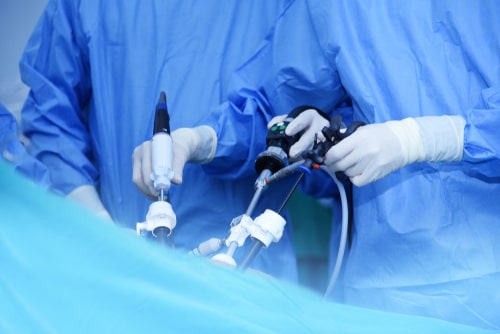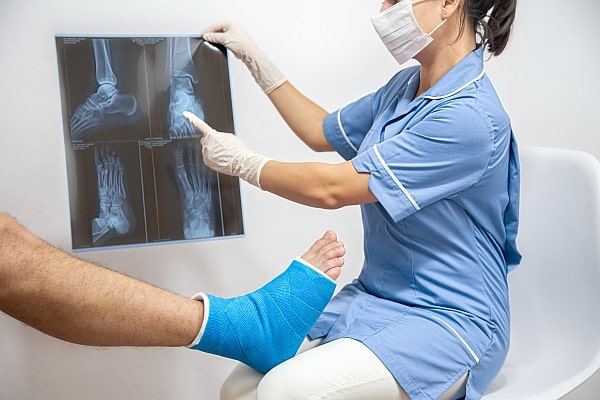- Minimally Invasive Procedures
Minimally Invasive Surgeries are performed with very small incisions and only a few stitches. To operate on the body, doctors use a variety of surgical techniques. It reduces wound healing time, associated pain, as well as the risk of infection. Experienced surgeons are required to perform minimally invasive procedures in Greenville.
Traditional open surgery involves large incisions that allow the surgeon to view the area being operated on. The doctor uses small tools such as cameras and lights to perform minimally invasive procedures. These tools enable the surgeon to perform minimally invasive surgery without needing to cut skin or muscles. To make large incisions, surgeons don’t even need to use scalpels.
This is a significant technological advancement in the medical field. Patients who are elderly, obese, or suffering from chronic pain will benefit. This procedure is safer than traditional open surgery and is more tolerable.
If you would like more information on how injections can help reduce pain, view this page
Types of Minimally Invasive Procedures
There are many types of minimally invasive procedures. These include:
Advanced Laparoscopic Surgery
This surgical procedure is used to examine the organs within the abdomen. This is a low-risk procedure that requires only small incisions. A Laparoscope is a tube that contains a light source and camera.
The camera transmits live images to a monitor. The surgeon can view your anatomy during surgery. Laparoscopy can be used to examine your appendix, gallbladder, and spleen.
Arthroscopic Surgery
Arthroscopy is used by orthopedic doctors to diagnose and treat joint problems. Through a small keyhole incision, the surgeon inserts a thin fiber optic camera. The recovery time is faster because it requires very few incisions. This is a standard procedure for the shoulder, spine, and knees, as well as the foot, hip, hip, wrist, and ankle.
Bronchoscopy Surgery
Bronchoscopy surgery is used to diagnose and treat lung conditions. This procedure involves the use of a flexible tube that has a camera and a light called a “bronchoscope”. The tube is passed through the mouth or nose to view the airways of the lungs. This technique can be used to diagnose blockage and obtain samples of fluids and tissues.
Video-Assisted Thoracoscopic Surgery (VATS)
The VATS procedure is used to diagnose, treat and monitor medical conditions in the chest. The surgeon uses a tiny camera and a thoracoscope to perform the procedure. The instrument is inserted into the patient’s chest through a small incision made in the chest wall.
The VATS procedure is used to treat conditions affecting the heart, lungs, spine, ribs, hiatal hernia, and esophagus.
Hysteroscopic Surgery
A type of minimally invasive procedure called hysteroscopy is used to diagnose. The hysteroscope, a surgical instrument used to insert another surgical instrument into the uterus through the cervix, is used for diagnosing purposes. This procedure is used by gynecologists to examine for abnormalities like fibroid and cervical polyps.
Robotic Surgery
This surgery is performed by a doctor using an electronic operation station that looks similar to a computer. To perform surgery, the surgeon uses a high-definition camera as well as robotic arms. Robotic-assisted procedures are used to treat difficult areas of the body. These include the head, neck, and lungs.
Vaginal Surgery
Major gynecologic surgeries can be performed via vaginal access minimally invasive (VIMS). The doctor may not need to make any incisions on the abdomen for this procedure. It generally presents a lower risk of complications than other abdominal procedures.
This approach is used by doctors to treat endometriosis and pelvic mass removal.
Sigmoidoscopy Surgery
This allows the surgeon access to your sigmoid colon and rectum. A small, flexible tube equipped with a light source and a camera is then inserted into the body of the patient. This method is used by doctors to examine for cancerous cells, polyps, abnormal cells, and other conditions.
Minimally Invasive Spine Surgery
MISS can be used to treat spinal conditions like a herniated disc, scoliosis, and nerve compressions.
What Are the Benefits of Minimally Invasive Surgery?
Most surgeries are invasive by definition. Large incisions are required for many operations. Sometimes, these incisions can leave deep wounds that are painful and difficult to heal.
Patients no longer have to endure such painful procedures thanks to medical technology. The minimally invasive procedures include arthroscopic (for spines and joints), laparoscopic devices, or manipulating instruments. The skin, body cavity, or anatomical opening is where the endoscope is inserted.
This allows the surgeon to see the operation and monitor the progress. You may not need multiple stitches after the procedure. Instead, you will only need to use adhesive bandages. The advantages of minimally invasive surgery over traditional open procedures are numerous.
These include:
- Patients with a lower infection risk are less likely to get sick.
- Recovery time is quicker
- Incisions that are smaller
- Less pain
- Hospital stays are shorter and possibly less frequent
- Reduplication of blood loss
- Operative trauma is less common
- Recovery is quicker
- Scarring is less
- Less tissue damage
It helps to reduce the likelihood of complications after surgery, etc.
What Are the Risks of Minimally Invasive Procedures?
Minimally invasive surgery can still be considered surgery. The risk involved is the same as for any other surgery. It is however less risky than traditional open surgery. Because experienced surgeons are more likely to be able to handle the risk, the risks are lower.
Talking to your surgeon is important to discuss any risks that could be associated with your procedure. These side effects and complications can include:
- Bleeding
- Infection
- Organ injury
- Death is possible in the direst circumstances.
What Is the Best Option for Minimally Invasive Procedures?
This procedure is safe and effective, but it is not an option for all surgeries. Each patient is different, so each case should be considered individually. There are also cases in which traditional open surgery may be more beneficial for the patient.
Examples include:
- Complex thoracic aneurysm repair
- Complex cancer surgery
- Rectal and colon surgery
- Neurosurgery, etc.
Open surgery may be necessary for surgeons to visualize better the area being operated on. It is absolutely essential to discuss the procedure with your doctor.
Call Us at Injury Medicine for the Best Treatment
It is normal to feel nervous when your doctor recommends surgery. The risk of surgery is lower if you have the right medical team. For diagnosis and treatment, contact Injury Medicine today.





